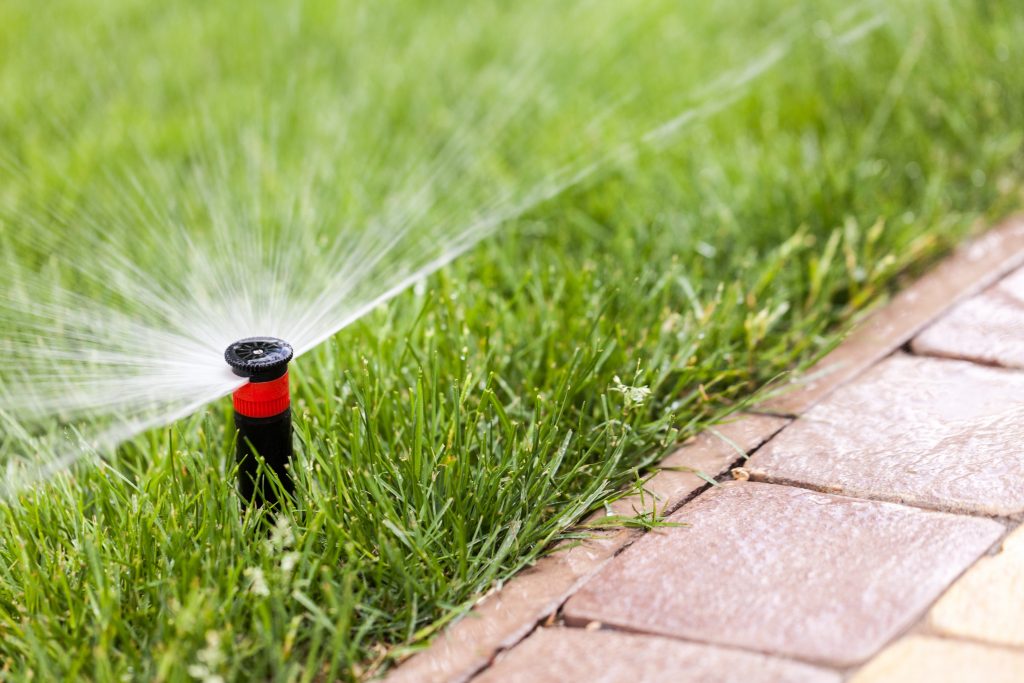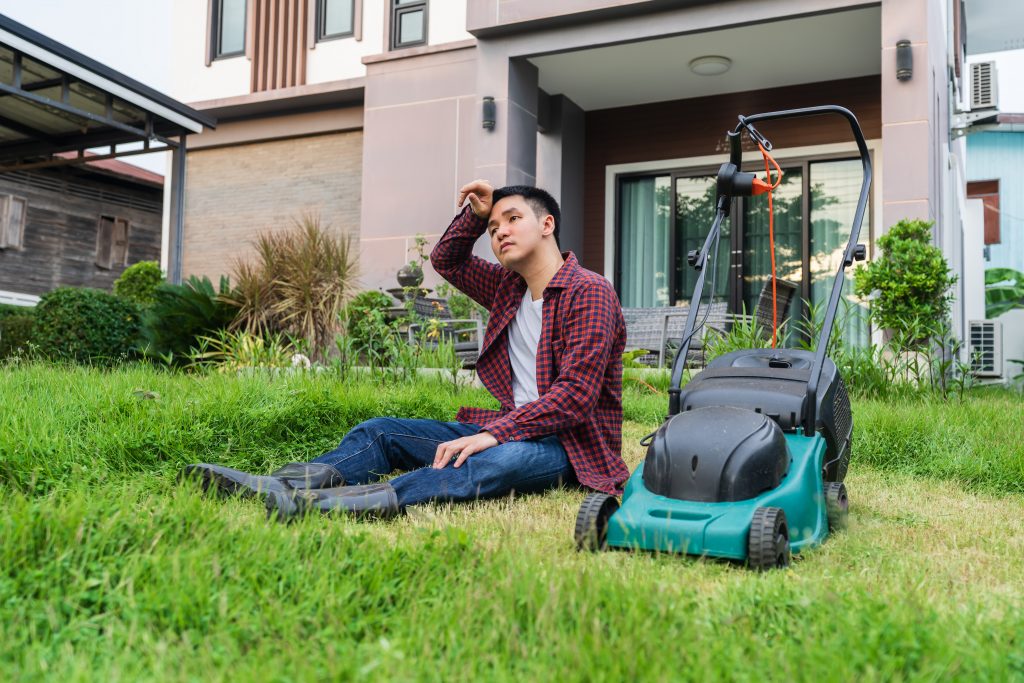Lawn and Landscape Choices
The Water Short List estimates that nearly 30% of a person’s household water footprint can go toward lawn and garden maintenance. And nothing stresses our water supply like lawn sprinklers during the hot and dry summer. Fortunately, there are many choices you can make outdoors to conserve water and save money!
How We Manage Our Lawns Matters

Watering
While the classic American green lawn’s history as a status symbol dates back to the earliest days of the nation, it wasn’t a middle class practice until the 1950s. Since then, lawns have come to occupy more than 50,000 acres (in 2005) in the United States, making them the largest irrigated crop in the country according to a NASA survey.
Lawn maintenance presents a number of environmental challenges, not the least of which is the demand they impose for water. Because turf grass has very shallow roots, it can’t access deeper pockets of moisture like native plants. Keeping grass green, especially in the hotter months, requires irrigation, which means using our public water supply for the purpose of maintaining residential landscape aesthetics.
This is where the real trouble lies. When the weather is hottest during the summer months, our climate tends to produce the least amount of precipitation of any time of the year. So just when the demand for water hits its peak, water supplies are the most stressed. To make matters worse, many automatic irrigation providers follow the same schedule: sprinklers running on every Monday, Wednesday, and Friday morning, resulting in a massive, coordinated, simultaneous withdrawal.
This period of heavy usage is called peak demand, and it can impact the amount of water available at a given time, compromising firefighting capacity, drawing aquifer or surface waters down to dangerously low levels. It has even forced some communities to upgrade their infrastructure–the pipes, pumps, and other parts of the system required to deliver the public water supply–and raise their individual utility rates to pay for the upgrades.
What Can You Do?

Only water under specific conditions
Don’t water on hot or windy days and only water in the early morning or late evening to prevent evaporation. This alone could save 20 gallons per day. Watering early in the morning before 9:00am is preferable to evening watering: wet grass overnight is more susceptible to fungus and disease.
Limit how much you water
Let it go dormant!
Some of the best protection you can afford our water supply is letting your lawn go dormant–yes, that means letting it turn brown. Watering once every two weeks with one-half inch of water will keep the grass crowns alive during dry periods even though the turf won’t be green. Most turf species are drought-tolerant, and by not watering during the driest and hottest times of the year, you are helping conserve water supplies for more important purposes.
It can be difficult to tell when turf is getting too dry and needs water to stay alive, and some thinning and turf death can occur if there is no rain or irrigation for 4-6 weeks. Having a schedule can help ensure timely watering. And, of course, a brown lawn doesn’t exhibit the aesthetic preferences our society has come to enjoy. This is why it’s important to take an action pledge! Knowing that others in your community are willing to make the same sacrifice will help the practice become more acceptable.
If you have to keep it green…
Limit watering to 2-3 times a week at most to save 750-1,500 gallons per month. If you step on the grass and it springs back, it doesn’t need water. Grass is naturally meant to go dormant, and during dry times of year, water conservation is extremely important to our communities. Help make brown lawns a new status simple: the conservation elite!
Go High Tech
If you’re determined to water your lawn, there are technological tools that can potentially reduce your water use. Irrigation controllers with a WaterSense label help limit watering based either on weather conditions or soil moisture levels. This helps ensure that the lawn only gets the water that it needs (although this may still be a higher standard than one set by conservation practices).WaterSense devices can also help regulate the water pressure in your sprinklers to reduce waste.
Don’t forget to regularly inspect and maintain your sprinkler system. Check for breaks or clogs in the lines, and make sure the sprinkler heads aren’t wasting water by over spraying onto sidewalks and driveways.
Raise mower blades
Set your lawn mower blades one notch higher to save 500-1,500 gallons of water per month. Taller grass has a deeper root system and loses less water to evaporation.
Use drip irrigation
If you keep a garden, use drip irrigation. Drip irrigation involves using hoses with small holes or small sprinkler heads placed at the base of plants. This uses far less water and delivers the water exactly where the plant needs it rather than wasting it in areas that do not (like empty mulched areas, sidewalks, or driveways).
Landscaping

Use mulch
Mulch around trees and plants. Mulch holds moisture in the soil, reducing your need to water as often. For every 1,000 square feet you water, mulch can save 20-30 gallons each watering. You can use a hardwood mulch, chunks of bark, peat moss, or the compost you create by not using your garbage disposal.
Plant natives
Plant native plants and save 30-60 gallons each time you water a 1,000 square foot area. Better yet – most native plants do not need supplemental watering unless they are new plantings or experiencing an extreme drought. Their deep roots also help remove pollution and replenish groundwater supplies. Learn more about native plants here.
Use drip irrigation
If watering is really necessary, use drip irrigation. Drip irrigation involves using hoses with small holes or small sprinkler heads placed at the base of plants. This uses far less water and delivers the water exactly where the plant needs it, rather than wasting it in areas that do not need it (like empty mulched areas, sidewalks, or driveways).
The Most Important Things You Can Do Outside
The four things that would make the biggest difference in reducing the amount of water you use outside are:
- Let grass go dormant in the dryer months.
- When watering, only use harvested rainwater.
- Use a grass appropriate to your region and climate.
- Use native and drought-resistant plants in your landscaping.